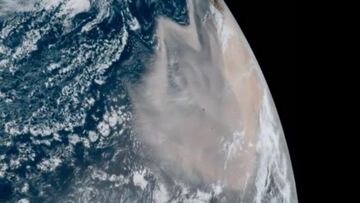Saharan dust cloud in Texas: how long will it last in the US and what consequences will it have?
An enormous mass of desert dust from Northern Africa will cover areas of Central Texas this week with substantial consequences for the local environment.

The Texas Commission on Environmental Quality has recommended that residents in Central Texas should be aware of a sizeable dust cloud that will cover areas of Northern America this week. The Saharan dust cloud is formed when hot air and dust particles mix in Northern Africa and are carried across the Atlantic Ocean by powerful winds.
Such events are fairly common and happen at a similar time every year. For most people the dust cloud will cause no real problems but the Commission on Environmental Quality has warned that people with dust sensitivities could be affected, and have predicted that the air quality will reach the lower end of the ‘Unhealthy for Sensitive Groups’ range.
How long with the Saharan dust cloud last?
The thick Saharan dust forms a huge cloud about one mile above the Atlantic, sometimes as deep as 2.5 miles thick. The dry, dusty air can cause irritation for individuals and can cause air quality issues, but the good news is that it does not typically last very long.
This time around projections suggest that the dust cloud will be most present between Monday 13 and Friday 17 June, with the air quality will subsequently returning to the ‘Moderate’ category. The peak is expected to occur on Wednesday night and Thursday before largely dispersing ahead of the weekend.
“It’s really exactly what it sounds like,” said Jake Sodja, a meteorologist at AccuWeather. “It’s a layer of dust that is picked up off the Sahara Desert and transported across the ocean.”
The dust cloud typically arrives in Texas between mid-June and August and lasts for 3-5 days.
What are the consequences of the Saharan dust cloud?
Such a large-scale meteorological event can have pretty far-reaching consequences for the environment. The enormous dust clouds can show up on satellite images as milky swirls in earth’s atmosphere, blocking out a degree of sunlight for everything below.
The huge quantity of dust and minerals that is deposited by the Saharan dust cloud serves as a major source of natural fertilizer for plants and oceanic ecosystems in the area.
The negative side of this is the growth of toxic algal blooms in the aftermath of the dust cloud, and a NASA-funded study found that the iron-rich desert dust promoted so-called ‘red tides’ in areas of the Atlantic. Red tides have killed countless numbers of marine life and humans exposed to the algae can suffer skin and respiratory problems.






